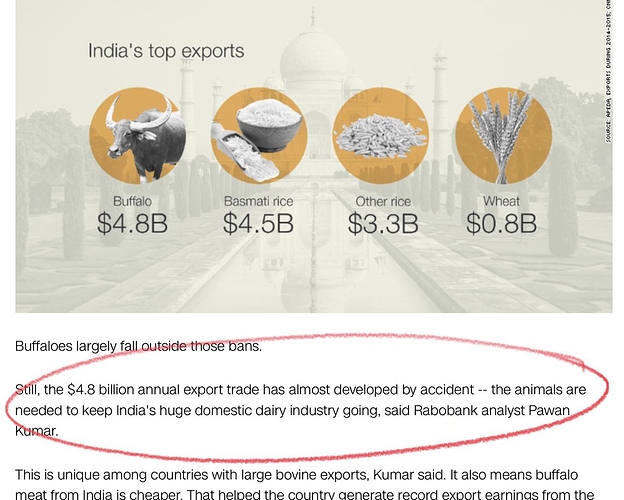First off, as per Jainism, milk consumption is absolutely not अभक्ष्य - in fact, it was one of the primary sources for मुनि आहार. Also, I agree that milk (especially buffalos) is highly nutritious, but there’s still a lot to consider.
There’s no issue specific to milk as a drink, but the procurement & treatment of the animal is not favorable in most cases.
Unlike old times, the commercialization of the dairy industry does create an impact with an inclination towards economic benefits. First, more the milk, more will be the profits which result in unnatural procurement. Second, once the cattle stop farming dairy, they are sent out to slaughterhouse for extra bucks.
“Still, the $4.8 billion annual export trade has almost developed by accident – the animals are needed to keep India’s huge domestic dairy industry going, said Rabobank analyst Pawan Kumar.”
India is one of the top consumers of milk and one of the top exporters of beef. There’s a strong correlation between them (recommended read).
It’s always good to have such initiatives or NGOs, but even the need to have them shows that the counterpart is much stronger just like NGOs for climatic change, NGOs for child abuse, NGOs for domestic violence, NGOs for animal cruelty, NGOs for poverty, etc.
Agreed, cultural richness should never be compromised, but with the change in circumstances, we have to adapt to sustain or improve.
Previously, Jinwani was mostly handwritten with proper respect, and with the invention of printers, now the Jinwavi is printed. There’s undoubtedly a lack of respect in the printing process, packaging, delivery, etc., and in fact, the majority was against such steps in the initial times. It should also be considered an example of “subversion of our cultural richness” but the positive side that so many people have access to it has high weightage, so its good to have that change. Moving forward, having the digitalization of Jinwani has challenges to overcome but much higher benefits.
In short, the question is not about भक्ष्य or अभक्ष्य (of course, milk is भक्ष्य) but as per current circumstances, “Should we drink milk or not?” is something to brainstorm.
With that being said - again, as per Jainism, milk consumption is absolutely not अभक्ष्य - in fact, it was one of the primary sources for मुनि आहार and highly nutritious.
I would like to hear your thoughts.
